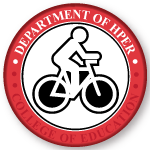Document Type
Article
Publication Date
2014
Publication Title
BMC Public Health
Volume
14
First Page
657
Last Page
655
Abstract
Background: The transition to parenthood is consistently associated with declines in physical activity. In particular, working parents are at risk for inactivity, but research exploring physical activity barriers and facilitators in this population has been scarce. The purpose of this study was to qualitatively examine perceptions of physical activity among working parents.
Methods: Working mothers (n = 13) and fathers (n = 12) were recruited to participate in one of four focus group sessions and discuss physical activity barriers and facilitators. Data were analyzed using immersion/crystallization in NVivo 10.
Results: Major themes for barriers included family responsibilities, guilt, lack of support, scheduling constraints, and work. Major themes for facilitators included being active with children or during children’s activities, being a role model for children, making time/prioritizing, benefits to health and family, and having support available. Several gender differences emerged within each theme, but overall both mothers and fathers reported their priorities had shifted to focus on family after becoming parents, and those who were fitting in physical activity had developed strategies that allowed them to balance their household and occupational responsibilities.
Conclusions: The results of this study suggest working mothers and fathers report similar physical activity barriers and facilitators and would benefit from interventions that teach strategies for overcoming barriers and prioritizing physical activity amidst the demands of parenthood. Future interventions might consider targeting mothers and fathers in tandem to create an optimally supportive environment in the home.
Recommended Citation
Mailey, Emily L.; Huberty, Jennifer; Dinkel, Danae M.; and McAuley, Edward, "Physical activity barriers and facilitators among working mothers and fathers" (2014). Health and Kinesiology Faculty Publications. 8.
https://digitalcommons.unomaha.edu/hperfacpub/8


Comments
© 2014 Mailey et al.; licensee BioMed Central Ltd. This is an Open Access article distributed under the terms of the Creative Commons Attribution License (http://creativecommons.org/licenses/by/4.0), which permits unrestricted use, distribution, and reproduction in any medium, provided the original work is properly credited. The Creative Commons Public Domain Dedication waiver (http://creativecommons.org/publicdomain/zero/1.0/) applies to the data made available in this article, unless otherwise stated.